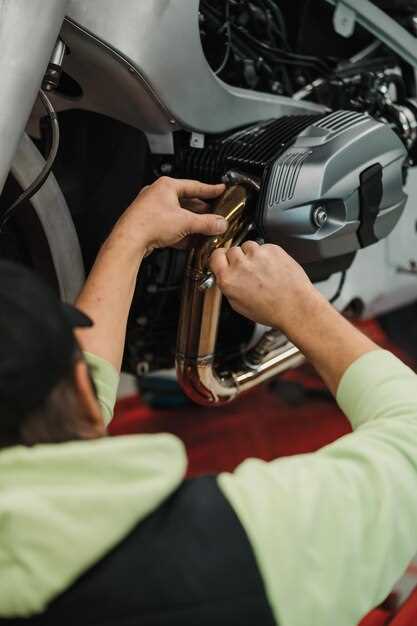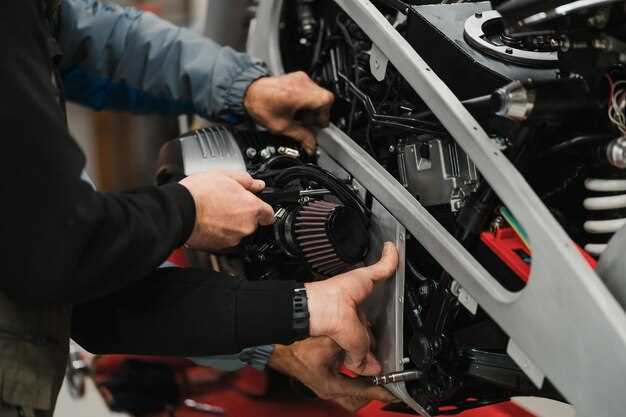
Suspension plays a critical role in the performance of racing motorcycles, directly influencing handling and overall ride quality. Properly adjusted suspension ensures that the motorcycle remains stable during high-speed maneuvers while providing optimal grip on various track surfaces. Understanding the intricacies of suspension adjustments can significantly enhance a rider’s capability to tackle challenging race circuits and achieve competitive lap times.
The techniques for adjusting suspension settings are multifaceted and require a comprehensive approach. Factors such as preload, compression, and rebound damping are vital for customizing the motorcycle’s handling characteristics. Each rider may have unique preferences and needs based on their riding style, weight, and the specific conditions of the race track. Therefore, recognizing the importance of each suspension setting is essential for finely tuning performance.
In this article, we will delve into the key techniques employed in adjusting suspension for racing motorcycles, providing insights that can lead to better traction, precise steering response, and an enhanced riding experience. Mastering these adjustments will not only improve your motorcycle’s responsiveness but also contribute to greater confidence on the track, enabling riders to push their limits and achieve peak performance.
Fine-Tuning Compression and Rebound Settings for Optimal Ride Feel
Fine-tuning compression and rebound settings is essential for achieving the optimal ride feel on racing motorcycles. These adjustments affect how the suspension reacts during various conditions, directly influencing handling, stability, and rider comfort.
Compression damping controls the rate at which the suspension compresses when encountering bumps and obstacles. Increasing compression settings typically results in a firmer ride, which can enhance stability during hard braking and cornering. However, excessive compression can lead to loss of traction, as the suspension may not absorb smaller imperfections effectively. Beginners should start with moderate compression settings and gradually adjust them based on feedback from track conditions and personal preference.
Rebound damping adjusts the rate at which the suspension returns to its original position after compression. Proper rebound tuning is crucial for maintaining tire contact with the ground, thus maximizing grip. A fast rebound setting can cause the bike to bounce, reducing stability, while a slow rebound can lead to sluggish handling and excessive dive. Riders should aim to find a balance where the suspension recovers quickly without losing control, allowing for a responsive and confident ride.
Both compression and rebound settings should be adjusted in small increments, ideally allowing for track time to evaluate each change. Documenting each setting and its effects can provide valuable insights into preferred configurations. Additionally, considering the type of racing and specific track characteristics is vital, as different surfaces and cornering styles may require distinct tuning strategies.
Ultimately, the goal of fine-tuning compression and rebound settings is to create a suspension setup that enhances feedback, promotes stability, and allows the motorcycle to perform optimally in various racing conditions. By applying a systematic approach to adjustments, riders can achieve a tailored ride feel that complements their unique riding style.
Understanding Spring Rates for Enhanced Cornering Stability

Spring rates play a crucial role in the overall handling of racing motorcycles, directly affecting cornering stability and performance. The spring rate is defined as the amount of force required to compress a spring a certain distance, and it significantly influences how the suspension system reacts to various road conditions.
When tuning a motorcycle’s suspension, understanding spring rates helps riders achieve a balance between comfort and performance. A stiffer spring rate typically improves response during cornering, as it reduces the amount of suspension dive while braking and enables quicker weight transfer. This translates to enhanced cornering stability, allowing the motorcycle to maintain its line through turns more effectively.
However, the ideal spring rate is not one-size-fits-all; it depends on several factors, including rider weight, riding style, and track conditions. For example, heavier riders may require stiffer springs to ensure that the motorcycle maintains proper geometry and handling dynamics during aggressive cornering. Conversely, lighter riders may find that softer springs provide the necessary feedback and comfort without sacrificing performance.
Another factor to consider is the interaction between the front and rear spring rates. Achieving the right balance is essential for optimal handling. If the front spring rate is too stiff compared to the rear, the motorcycle may feel twitchy and less stable in corners. Conversely, if the rear spring is too stiff, it may lead to understeer and decreased agility. Therefore, careful tuning of both front and rear spring rates can significantly enhance cornering performance.
In conclusion, understanding and adjusting spring rates is vital for racers looking to improve cornering stability and overall handling. By carefully considering rider-specific factors and the motorcycle’s dynamics, riders can fine-tune their suspension systems, ensuring maximum performance on the track.
Analyzing Weight Distribution and Its Impact on Suspension Performance

Weight distribution plays a critical role in the performance of racing motorcycles, particularly in relation to suspension and handling characteristics. Understanding how weight is spread across the motorcycle affects how effectively the suspension can manage the forces acting upon it during various riding conditions.
Proper weight distribution can enhance suspension responsiveness and overall handling by allowing the suspension system to react more favorably to road conditions. Here are key aspects to consider:
- Front vs. Rear Weight Balance: The ratio of weight between the front and rear of the motorcycle significantly influences stability. A 50/50 distribution is often ideal for balanced handling but may vary depending on riding style and track conditions.
- Weight Transfer: During acceleration, braking, and cornering, weight transfers dynamically. Understanding how weight shifts can help adjust suspension settings, ensuring the bike remains stable and predictable.
- Suspension Settings: Adjusting preload, compression, and rebound damping can address weight distribution issues. A well-tuned suspension compensates for imbalances, improving grip and control.
- Rider Position: The rider’s posture can alter weight distribution. Centralizing the rider’s weight can enhance front-end grip, especially in corners, while moving rearward may stabilize high-speed maneuvers.
- Track Conditions: Various surfaces and weather conditions affect how weight distribution impacts suspension. Slippery or uneven surfaces may require adjustments to both weight distribution and suspension settings for optimal handling.
To optimize suspension performance, conduct thorough analyses of weight distribution during testing. Collect data on handling characteristics to inform necessary adjustments. A well-balanced motorcycle with tuned suspension will exhibit improved cornering ability, stability, and rider confidence on the track.
